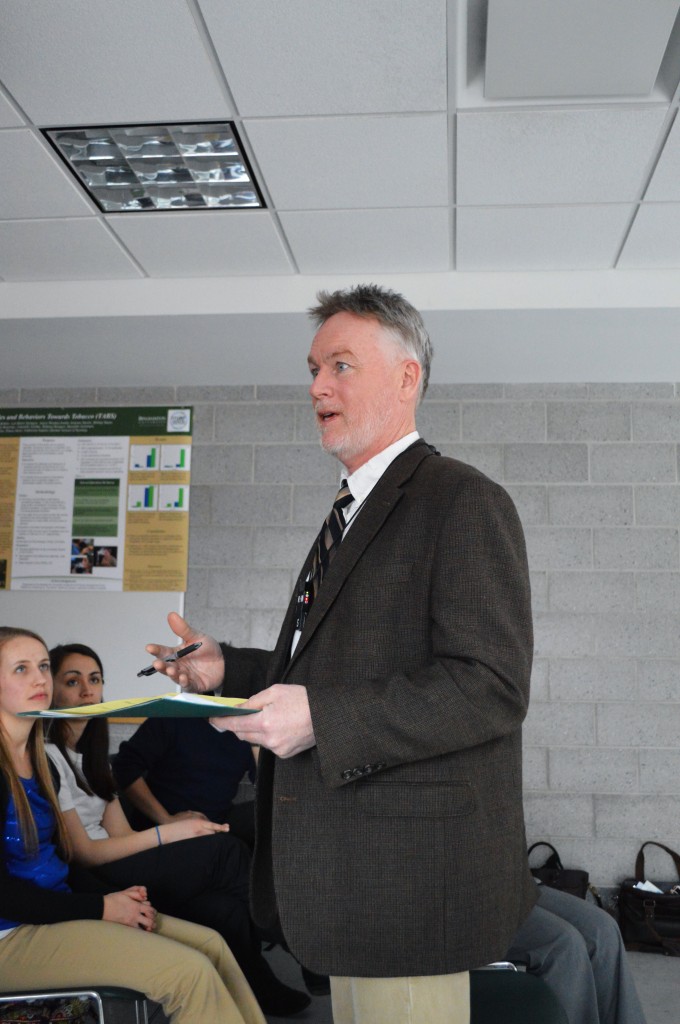
While the popularity of cigarettes may be declining across the country, the popularity of hookah and e-cigarette smoking has been steadily increasing. According to Binghamton University researchers, students may not know how much trouble they are getting into with each puff.
Binghamton’s Interdisciplinary Tobacco Use Research Program (ITURP) hosted “Blowing Smoke: The Changing Face of Tobacco” Friday in the Old University Union. Speakers and anti-smoking advocates came together to discuss the effects of using new forms of tobacco. Members of ITURP shared the results of a survey distributed among BU students and employees that assessed experiences with tobacco and campus opinions of what constituted a healthy campus.
The study demonstrated that most participants thought a tobacco-free campus was a health priority. This included prohibiting the sale or advertisement of tobacco products on campus and promoting anti-smoking campaigns. Despite this consensus, ITURP found that tobacco was still an issue on campus, especially with e-cigarettes, smokeless tobacco and hookah.
The director of ITURP, Dr. Geraldine Britton, said that these findings were troubling because these products are usually advertised as safer alternatives or ways to quit smoking cigarettes, but students were not using them for those purposes.
“We found that there was a very high usage of e-cigarettes and hookah in the campus community,” Britton said. “It went against the marketing strategy that e-cigarettes were going to be used as a smoking cessation strategy, because most students are using it to begin smoking.”
According to Britton, the survey found that 30 percent of participants who said they used hookah and e-cigarettes had never smoked traditional cigarettes before. ITURP member Courtney Berenato, a senior majoring in nursing, said that the FDA had not instituted an approval process for e-cigarettes, meaning that the exact components of an e-cigarette are unknown.
“A lot of people are using e-cigarettes, hookah and smokeless tobacco that wouldn’t consider themselves smokers, so it’s an interesting relationship there,” Berenato said. “Take a second and think, is that really better for you than a cigarette?”
Peter Cittadino, the senior market manager for the American Cancer Society, warned against the tobacco industry’s ability to target youth in creative ways and told students to “question what they see.”
“The tobacco industry is always looking for new replacement smokers because that’s the only way they can stay in business,” Cittadino said. “Many people have the idea that they’re going to smoke while they’re in college and then stop, but the product is engineered to keep them addicted.”
Another speaker present was Sharon Fischer, the tobacco control coordinator at the Broome County Health Department. Fischer described her work to educate community residents on the effects of tobacco usage with elected officials to help implement policies that will decrease the likelihood of smoking among youths.
“I am proud to report that after working with the city of Binghamton for about two years on this, last April the city passed an ordinance prohibiting new tobacco retailers from locating within 500 feet of schools,” Fischer said. “I know 500 feet isn’t a huge distance, but it’s a start.”


